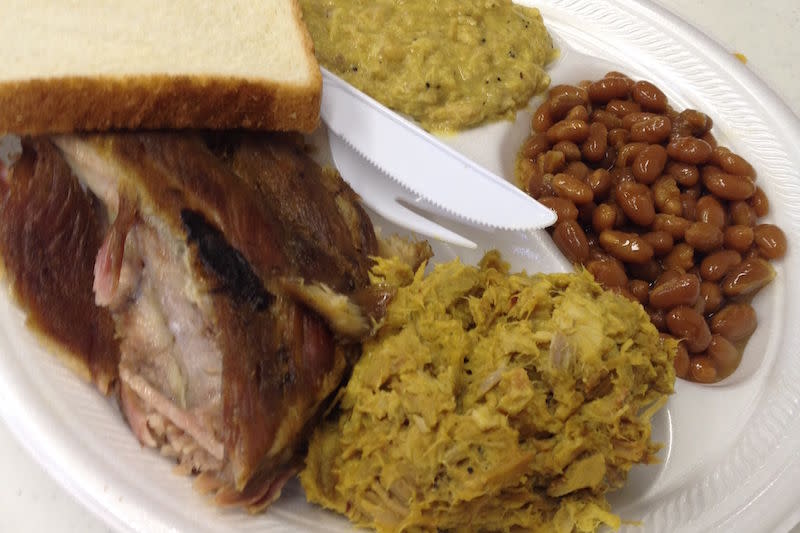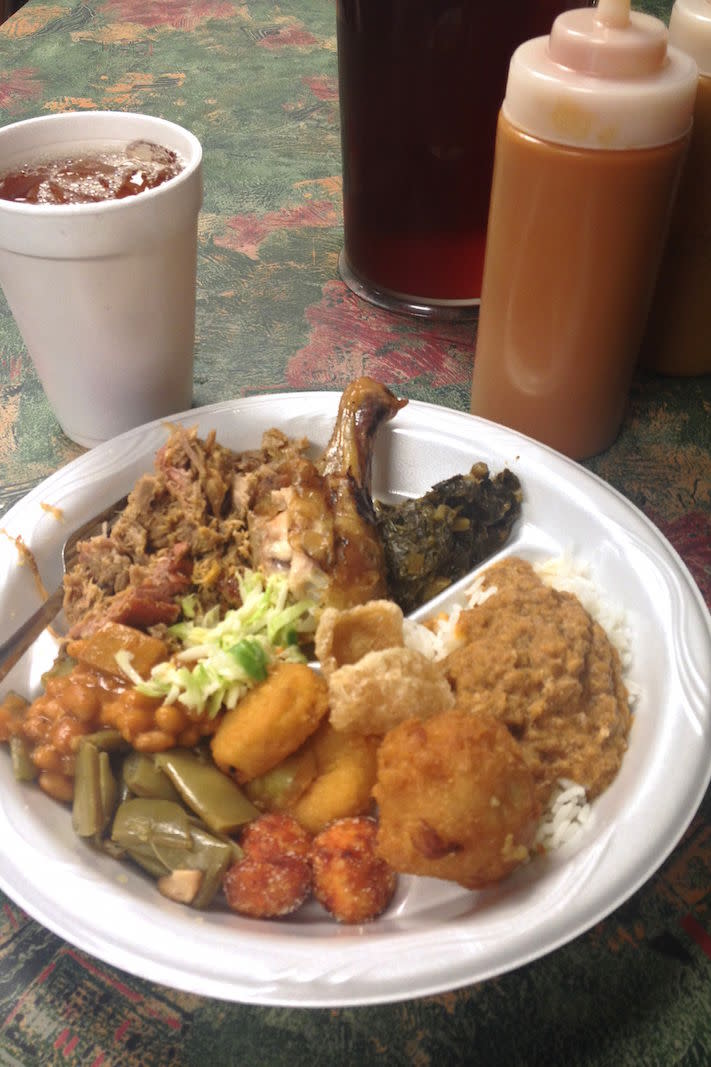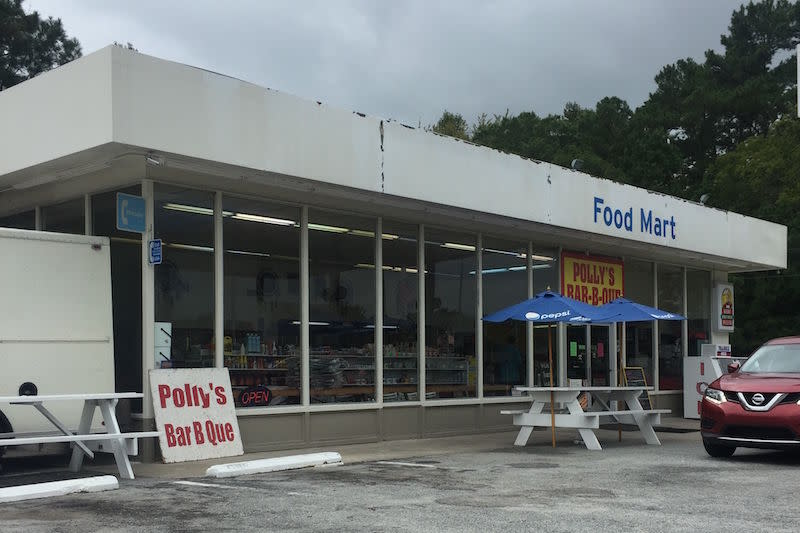Charting the Mustard Line
There are plenty of regional oddities in the world of barbecue, but few stir barbecue fans’ passions more than the mustard-based barbecue sauce found in the Midlands and Lowcountry of South Carolina. For those who grew up in the region, it’s the defining characteristic of “real barbecue”. When diners from somewhere else first encounter it (as I did back in 1992, when I moved to Columbia), they’re often taken aback.
It is, after all, bright yellow in color—a hue rarely found in the barbecue world. It tends to be quite thick, and its flavor is sweet, tart, and biting all at the same time—a combination that, I will admit, can be something of an acquired taste.

The origins of this unique regional sauce are murky. The members of the Bessinger family maintain that it was the creation of patriarch Joe Bessinger. Bessinger’s grandson David, who now owns the two Melvin’s Barbecue restaurants in the Charleston area, traces it back to the Depression era, when Joe Bessinger was still a farmer and logger in Orangeburg county and had yet to open his first restaurant in Holly Hill.
“In 1933, my dad was 10 years old,” David Bessinger told me. “He came upon his daddy in his shed making this sauce with another man. They were making that mustard based sauce, and his daddy told him he knew he had something.” Eight of Joe Bessinger’s eleven children—including David’s father, Melvin—went into the barbecue trade, and they took their father’s “yellow gold” recipe down to Charleston as well as up to Columbia.
But was Bessinger really the first? In 1979, H. O. “Bub” Sweatman, the founder of Sweatman’s Barbecue outside Holly Hill, told the authors of the South Carolina barbecue guidebook Hog Heaven that his family had been cooking whole hogs in their backyard for three generations and that the recipe for his mustard-based sauce was 75 years old—which would put it almost back to the turn of the 20th century.
These family stories are really all we have to go on. I’ve been unable to turn up any documentary sources before the 1970s that mention mustard-based sauce. Lots of writers these days attribute the presence of mustard to the many German immigrants who populated the middle part of South Carolina starting in the colonial days. Germans, the story goes, have an enduring fondness for mustard and like to pair it with pork, and many of the pioneering families of South Carolina barbecue, like the Bessingers and Hites, have German names.
That may be so, but the linkage to sauce ingredients seems pure conjecture, and there’s no evidence to suggest that mustard-based sauces were used on barbecue before the 20th century.
By the 1970s, though, the bright yellow concoction was common across a wide swath of territory ranging from Newberry County (some 50 miles west of Columbia) all the way down to the coast in Charleston. Lake Marion and Lake Moultrie seem to form the northwestern boundary of the mustard zone, for once you go past them into South Carolina’s Pee Dee region, the sauce is uniformly vinegar-based and laced with lots of red pepper.

The southern boundary is more porous and uncertain. On recent barbecue excursions into Georgia and Florida, I’ve been charting what I have termed the “mustard line”—the invisible demarcation of territory where yellow barbecue sauce can be found.
At some point over the years, mustard sauce forded the Savannah River and made its way down the Georgia coast and into northern Florida. Since 1957, Jenkins Quality Barbecue, which has three locations in the Jacksonville area, has been topping ribs and chicken with two flavors of mustard sauce—hot and mild—using a secret recipe that founder Melton Jackson, Jr. learned from his father. Bottles of yellow mustard sauce await at the tables at The Pig, too, another small Jacksonville chain dating back to the 1950s.
The version at The Pig is sharp and spicy, but the sauces get sweeter as you head north. About an hour up I-95 outside of Townsend, Georgia, the folks at Polly’s Bar-B-Que—which, for my money, serves some of the best gas-station barbecue in the South—top their sandwiches with a yellow mustard sauce that is almost cloyingly sweet when tasted by itself. Atop a pulled pork sandwich, though, the sweetness melds with the tender, smoky meat to create a delightfully rich and satisfying bite.

These days, mustard-based barbecue sauce is continuing its slow but steady advance. In 1979, when Allie Patricia Wall and Ron L. Layne surveyed 99 restaurants for Hog Heaven, the territory west of Newberry was dominated by tomato-based sauce. In recent years, the yellow stuff has crept further westward, and mustard sauce is now provided as an option at noted spots like Midway BBQ in Union County and Henry’s Smokehouse and Mike’s & Jeff’s in Greenville.
Though the bright yellow color and sharp mustard bite may be a bit off-putting at first, I encourage barbecue fans to give this South Carolina specialty a shot. With repeated applications, you might just come to think it the ideal accompaniment for a big plate of pulled pork barbecue. Just don’t try to put it on a piece of beef brisket. I’m all for cross-regional experimentation, but you do have to draw the line somewhere.
Looking for what goes into the pot when making mustard-based sauce? Our next post offers two recipes.

